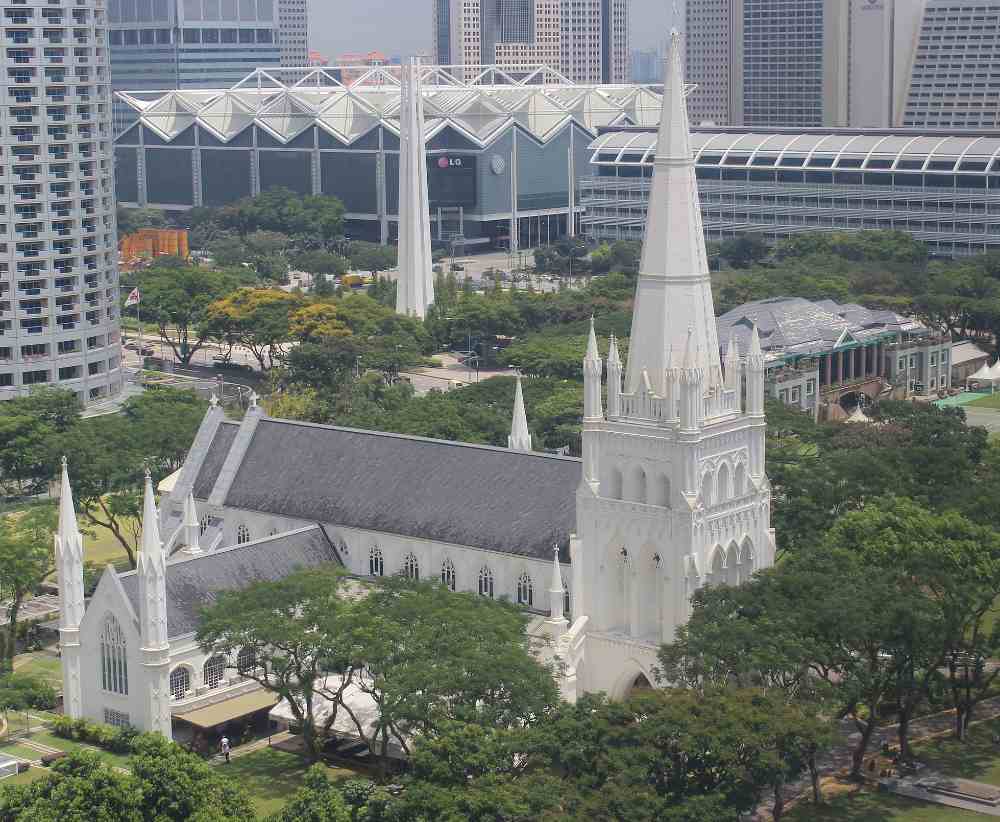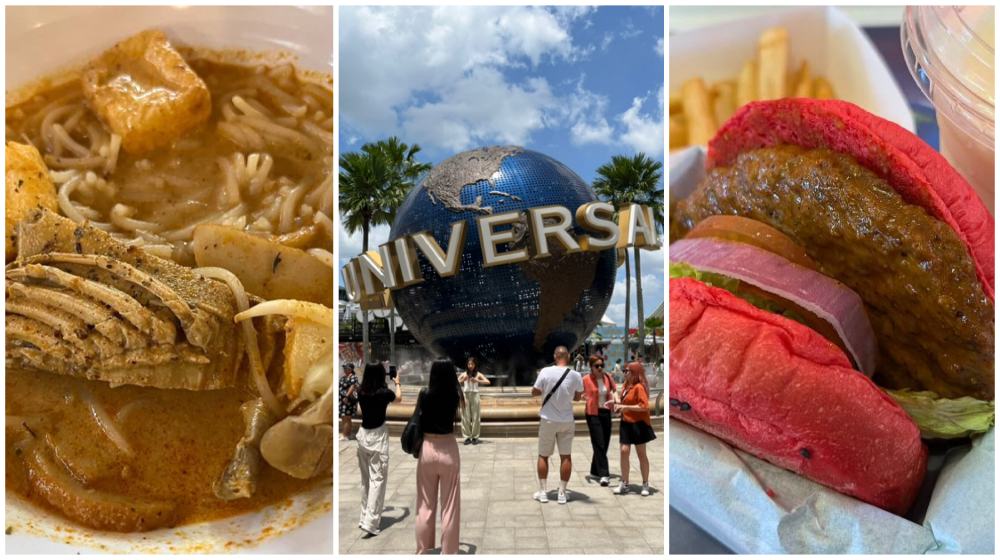Uncovering Secrets: What I've Learnt From Visiting All 75 National Monuments In Singapore
What is a National Monument? Who gazettes them? How many national monuments are there in Singapore? To date, the Preservation of Sites and Monuments, a division of National Heritage Board, has identified and gazetted 75 buildings, structures and sites of national significance as an integral part of Singapore’s built heritage.
You've probably passed by or stepped into more than a few of them without realising they were National Monuments: Al-Abrar Mosque, Asian Civilisations Museum, the Civilian War Memorial, Saint Andrew's Cathedral, the Esplanade Park Memorials, Fort Siloso on Sentosa.
And after exploring all 75 of Singapore’s National Monuments (it took me a leisurely year and a half), I feel as though I've opened a treasure chest of fascinating stories, hidden details, and mind-blowing craftsmanship - all in my own backyard. I highly recommend you go on the same adventure as I did – after all, most of the National Monuments grant you free entry!
Meanwhile, here are some of the most incredible things I've learnt about them:
 The roofs of Hong San See temple are richly decorated with various carvings and sculptures made using the 剪粘 (jian nian) technique. | IMAGE: NG KAI
The roofs of Hong San See temple are richly decorated with various carvings and sculptures made using the 剪粘 (jian nian) technique. | IMAGE: NG KAI
 The same technique is applied on Yueh Hai Ching temple's roofscape. | IMAGE: NG KAI
The same technique is applied on Yueh Hai Ching temple's roofscape. | IMAGE: NG KAI
The OG "cut and paste" technique of 剪粘 (jian nian)
At temples like Thian Hock Keng, Hong San See, and Yueh Hai Ching, among others, I learned about the traditional Chinese art of 剪粘 (jian nian, which literally means "cut and paste"). This painstaking process involves smashing colourful ceramic bowls into fragments and reassembling them into intricate decorative motifs – think dragons, phoenixes, and flowers. It's like solving a giant 3D mosaic puzzle, where every tiny shard adds to the beauty and meaning of the final design.
Fun fact: Yueh Hai Ching temple is also nicknamed the "Temple of Love", because people visit to pray for romantic success. If you ask me, it's better than Hinge+ or Tinder Gold; some more, free of charge!
 Central Fire Station. | IMAGE: NG KAI
Central Fire Station. | IMAGE: NG KAI
The architectural style of “blood-and-bandages"
The Central Fire Station isn’t just Singapore’s oldest surviving fire station, it’s also a rare showcase of the “blood and bandages” architectural style. Popular in Edwardian England (1901-1910), this design features alternating red bricks and white plaster bands that make the building look like it's wearing a striped suit. It’s the only place (and National Monument) in Singapore where you can spot this quirky style, and it’s still fully functional today!
 The Chesed-El Synagogue. | IMAGE: NG KAI
The Chesed-El Synagogue. | IMAGE: NG KAI
 Prinsep Street Presbyterian Church, one of Singapore's oldest Presbyterian churches. | IMAGE: NG KAI
Prinsep Street Presbyterian Church, one of Singapore's oldest Presbyterian churches. | IMAGE: NG KAI
Swan & Maclaren’s monumental legacy
Did you know Singapore’s first architectural firm, Swan & Maclaren (founded in 1892), is behind at least a dozen of our 75 National Monuments? Their iconic works include the grand Raffles Hotel, the historic Former Tanjong Pagar Railway Station, and the dignified St. Andrew’s Cathedral. Talk about designs that stand the test of time!
 The gopuram of Sri Srinivasa Perumal temple in Farrer Park. | IMAGE: NG KAI
The gopuram of Sri Srinivasa Perumal temple in Farrer Park. | IMAGE: NG KAI
Towering gopurams (entrance towers)
A gopuram is essentially a really grand tower entrance to a Hindu temple. And among the Hindu temples in Singapore, three (Sri Srinivasa Perumal temple, Sri Thendayuthapani temple, and Sri Mariamman temple) have been gazetted as National Monuments.
 Sri Mariamman temple's six-tiered gopuram. | IMAGE: NG KAI
Sri Mariamman temple's six-tiered gopuram. | IMAGE: NG KAI
Not only is Sri Mariamman Temple the oldest Hindu temple in Singapore, it is also the first place to start fire-walking ceremonies (Thimithi). The temple’s elaborate gopuram (entrance tower), bursting with vivid sculptures of deities and mythological figures, had me like "😮" when I first saw it in real life in all its glory.
 St Andrew's Cathedral. | IMAGE: WIKIMEDIA COMMONS/@FLAMING FERRARI
St Andrew's Cathedral. | IMAGE: WIKIMEDIA COMMONS/@FLAMING FERRARI
Not one, but two lightning strikes
St. Andrew’s Cathedral's towering spire makes it Singapore’s largest cathedral. Its pristine white façade – made from Madras chunam (a mixture made from shell lime, egg white, coarse sugar, and water in which coconut husks had been steeped) – is a nod to our colonial roots.
Fun fact: the spire of the original chapel building built in 1835 was struck by lightning twice, once in 1845, and again in 1849. Despite common myths, lightning frequently strikes the same location more than once. And ICYDK, Singapore has one of the highest rates of lightning activity in a year (almost once every other day) - just check out this awesome photo captured by Paul Lee during a storm in, um, Yishun. Our merlion hasn't been spared either.
 The Former Ford Factory. | IMAGE: NG KAI
The Former Ford Factory. | IMAGE: NG KAI
The architectural style of Art Deco
Known for its bold geometric designs and vertical lines, the Art Deco (short for the French Arts décoratifs) style was popular in the 1920s and 30s. Buildings (and National Monuments) like The Cathay, Former Ford Factory, and Former Tanjong Pagar Railway Station were all designed in the Art Deco style.
See if you can 👁️ this architectural style around other parts of Singapore!
 (Clockwise from top left), the Former Nanyang University Arch; Memorial; and Library and Administration Building have been collectively gazetted as a single National Monument. | IMAGES: (CLOCKWISE FROM TOP LEFT) INSTAGRAM/@GOWALKSUNSHINE, NG KAI, AND WIKIMEDIA COMMONS
(Clockwise from top left), the Former Nanyang University Arch; Memorial; and Library and Administration Building have been collectively gazetted as a single National Monument. | IMAGES: (CLOCKWISE FROM TOP LEFT) INSTAGRAM/@GOWALKSUNSHINE, NG KAI, AND WIKIMEDIA COMMONS
Structures collectively gazetted as one National Monument
Who says a National Monument is made up of a single structure? There are, as I discovered, a few National Monuments in Singapore that comprise two or more structures collectively gazetted as one National Monument.
Some examples include the Esplanade Park Memorials, the Istana and Sri Temasek, and the Changi Prison Gate Wall and Turrets.
Final thoughts...
Exploring Singapore’s National Monuments isn’t just about admiring beautiful buildings; it’s about uncovering the layers of stories, craftsmanship, and history that define our Lion City's identity. From the artistry of 剪粘 (jian nian) to quirky architectural styles like "blood-and-bandages", each monument is a treasure trove of knowledge waiting to be discovered.
Click here to check out all our stories on Singapore's National Monuments.
For the latest updates on Wonderwall.sg, be sure to follow us on TikTok, Telegram, Instagram, and Facebook. If you have a story idea for us, email us at [email protected].









